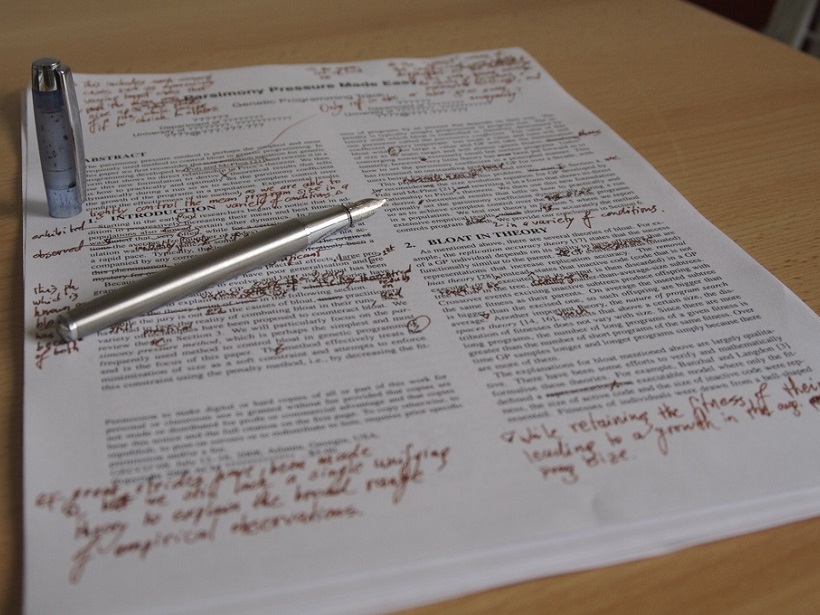Submitting your paper for peer review can be daunting as you expose your best work to the scrutiny of experts, and they offer critiques to help you improve the caliber and accessibility of your paper. As I start my tenure as Editor-in-Chief for Water Resources Research (WRR), I wanted to share some reflections on the value of the peer review process drawing from my own experiences. In Part 1 I offer some advice to early career scientists thinking of submitting a paper to WRR on making the most of reviews. In Part 2 I reflect on how my experiences an author have influenced me as an editor.
My most memorable experience in submitting a manuscript was when one reviewer made the following statement in his review: “…I realize that there is going to be a follow-on paper, which is OK, but frankly I am reminded of the traveler who happens to pass a group working on stalled truck. He stops, gets out and peers over their shoulders. After a few minutes he says “I have a better idea”, then he leaves. Not very satisfying, eh? A more convincing demonstration should be given in this paper…”
Naturally, I was gutted, but also motivated to more clearly demonstrate my ideas, so I spent a considerable amount of time improving the paper. Years later the reviewer published a synthesis paper in the 50-year special issue for WRR, where he wrote “My personal favorite paper in WRR on snow distribution, and one I think is most useful, is the paper by Clark et al. [2011]. I was a reviewer (not anonymous) on this paper, and I have been told by the authors I cost them several years of additional work, but I believe it was worth the effort…” [Sturm, 2015, p4958].
So what would I say to early career scientists submitting their first paper to Water Resources Research as they face the peer review process? Most important, take the time to write an excellent paper. Too often papers are submitted that are rough around the edges, and papers with important science advances may struggle in the review process (e.g., see Kumar et al. [2012] on how to prepare a really lousy submission). It’s well worth taking some extra time before submission to polish your paper, to ensure it is well structured and well written, that the figures are clear and compelling, that the results are described clearly and objectively, that the conclusions clearly describe what you have learned, and that the references are complete. Critically, it’s important to clearly place your paper in the context of previous work, citing recent papers that may have been published since you started your research, and clearly demonstrate how your work advances the current state of knowledge. Taking the time to write an excellent paper makes it easy for the reviewers (your first readers) to appreciate the importance and novelty of your contribution, to make a positive recommendation, and shorten the duration of the review process (see Nicholas and Gordon [2011] to find out how reviewers will approach your paper).
Also, take the time to carefully revise your paper in response to the reviewer’s criticisms. Too often authors have “moved on” since they submitted their paper, and many are more interested in simply publishing a paper than publishing a good paper. Put differently, authors do not often put adequate time into revising their paper to take full advantage of the constructive criticisms from the reviewers. If the decision is to revise then authors may do the minimum work necessary; if the decision is reject then authors may submit to another journal without change.
The reviews should not be viewed as hurdles for the author to overcome, but, rather, as a sincere effort from a member of the community to substantially improve the paper. Sometimes the resistance to revise causes much more work for the authors (not to mention the pool of reviewers!) since the papers go through more review cycles than necessary. The primary purpose of the review process is to improve the quality and impact of published papers, and spending more time on revisions can substantially strengthen research outputs and accelerate advances in science.
More generally, aim to publish your best work in WRR. The papers published in a top-tier journal like WRR are those with important and novel science advances. WRR Editors will work hard to ensure that the review process is constructive and fair, to increase the quality and impact of the submitted manuscripts. They will also work hard to publicize the major science advances published in WRR, for example through Editorials, awards, websites, social media, and oral presentations, so that the broader science community discovers your best work.
—Martyn P. Clark, Research Applications Laboratory, National Center for Atmospheric Research; email: [email protected]
Citation:
Clark, M. P. (2017), Benefiting from good reviews: Part 1, Eos, 98, https://doi.org/10.1029/2018EO070813. Published on 05 April 2017.
Text © 2017. The authors. CC BY-NC-ND 3.0
Except where otherwise noted, images are subject to copyright. Any reuse without express permission from the copyright owner is prohibited.

